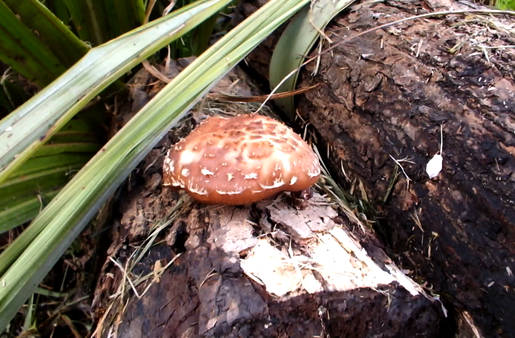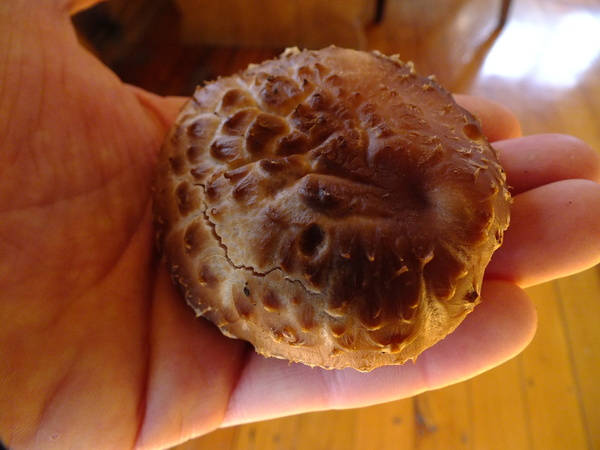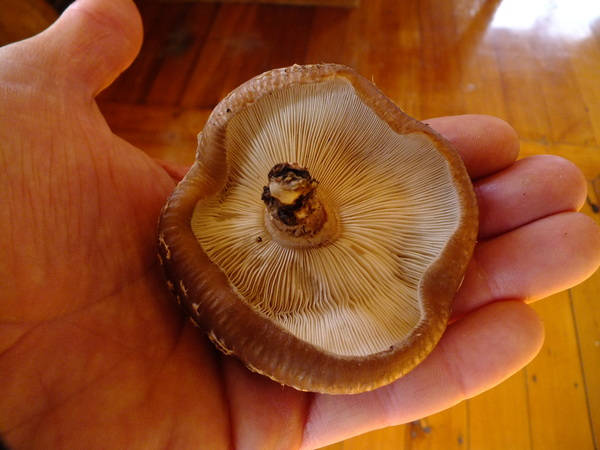Growing shiitake mushrooms (Lentinula edodes) on logs
A natural way to cultivate these flavourful and nutritious fungi
1. Preparation
Selecting Logs
- Type of Wood: Shiitake mushrooms thrive on hardwoods such as oak, beech, sugar maple, sweetgum, and eucalyptus. Avoid softwoods like pine or cedar, as their resin inhibits fungal growth.
- Log Size: Logs should be 1–1.2 meters long and 10–20 cm in diameter for easy handling.
- Freshness: Use freshly cut logs (ideally within 1–2 weeks of felling) to ensure they retain moisture and are free of competing fungi.
Timing
- Ideal inoculation time: Late winter to early spring (Southern Hemisphere: June–August) before tree buds break dormancy.
2. Inoculation
Tools and Materials
- Shiitake Spawn: Purchase spawn in either sawdust or plug form.
- Drill: Use a drill with a 12 mm bit to create inoculation holes.
- Hammer or Inoculation Tool: For inserting spawn.
- Wax: Beeswax or food-grade paraffin for sealing inoculation sites.
- Heat Source: To melt the wax.
Process
- Drill Holes:
- Space holes 10–15 cm apart along the length of the log in a staggered pattern, leaving about 5 cm between rows.
- Insert Spawn:
- Fill each hole with shiitake spawn. For plug spawn, tap it into place with a hammer; for sawdust spawn, use an inoculation tool.
- Seal with Wax:
- Melt wax and brush it over the filled holes to protect the spawn from pests, contamination, and moisture loss.
3. Incubation
Location
- Place logs in a shaded, humid area with good airflow. Forest edges or under a shade cloth are ideal.
Stacking Logs
- Stack logs in a crisscross "log cabin" style or lean them against a support in an A-frame structure. Ensure air circulation around each log.
Moisture Management
- Logs must stay moist but not waterlogged. Water them during dry periods (2–3 times weekly) or after extended periods of no rain.
- Avoid submerging for extended periods until ready for fruiting.
Incubation Period
- Mycelium colonization takes 6–18 months, depending on conditions. You’ll see white mycelium under the bark when it's fully colonized.
4. Fruiting
Inducing Fruiting
- After incubation, submerge the logs in cold water (10–15°C) for 24–48 hours to shock the mycelium into fruiting.
- Fruiting typically occurs 7–14 days after soaking.
Harvesting
- Harvest mushrooms when the caps are fully open but not flattened.
- Twist gently or cut the stem close to the log to avoid damaging the mycelium.
5. Maintenance and Longevity
- Rest Period: Allow logs to rest for 8–12 weeks between fruiting cycles.
- Lifespan: Each log can produce mushrooms for 3–5 years, depending on log size and wood type.
- Pests and Diseases: Monitor for slugs, rodents, or mold, and take measures to control them.
6. Benefits of Log Cultivation
- Low Cost: Minimal initial investment after obtaining logs and spawn.
- Sustainability: Uses renewable wood resources and produces little waste.
- Quality: Home-grown shiitake mushrooms are fresher, tastier, and free of synthetic chemicals.
3 pictures - click to enlarge
Your session will expire soon
Your session has been idle for some time and will expire shortly if no action is taken.
Hide this message


